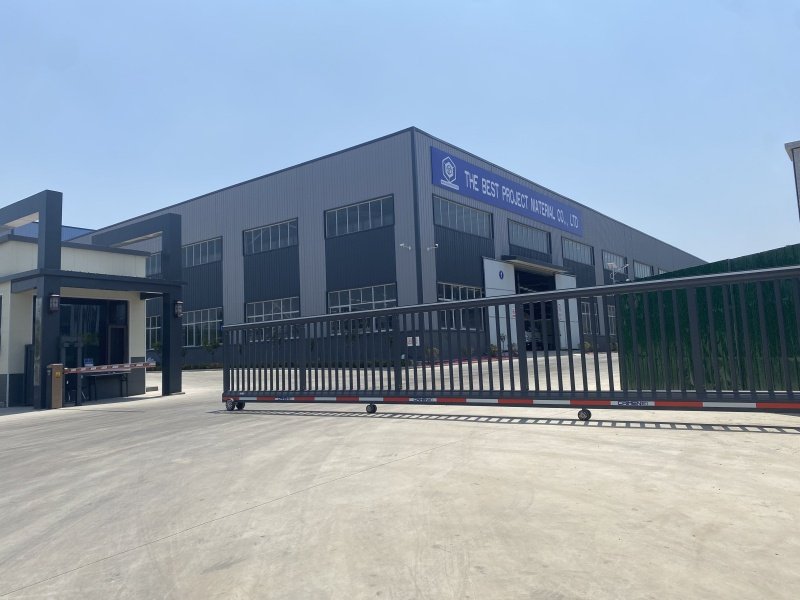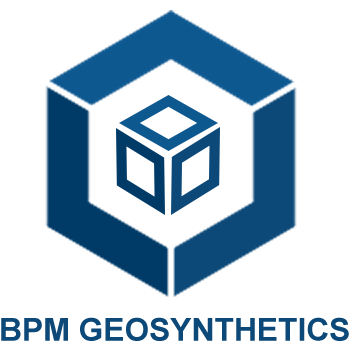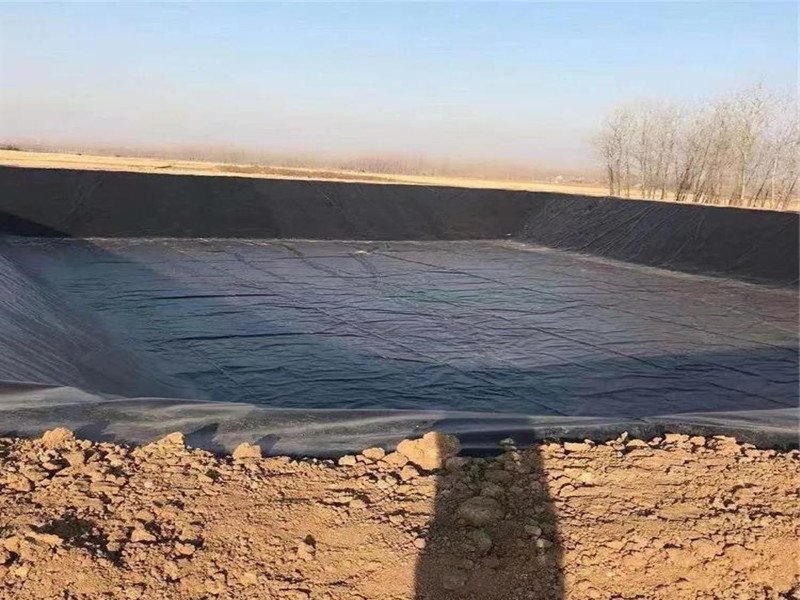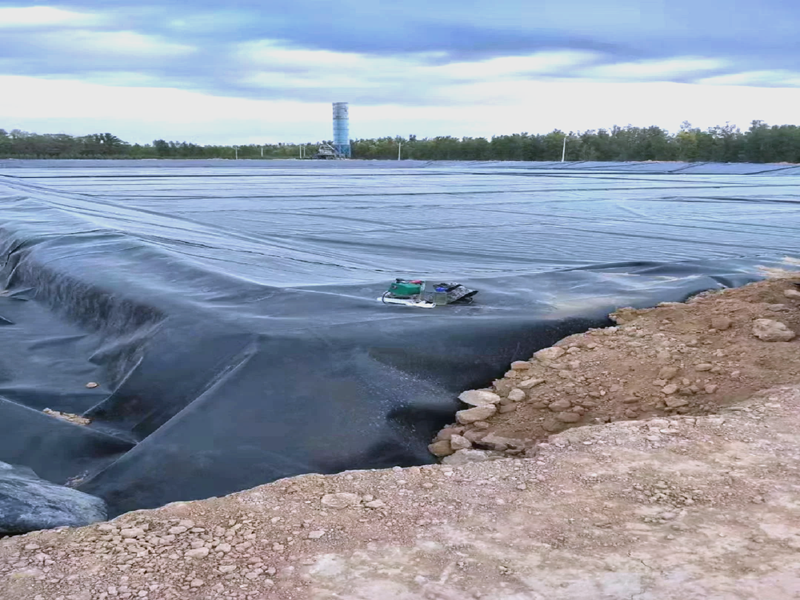Textured geomembrane is used for anti-seepage, waterproofing engineering, etc. Textured geomembrane has a membrane body, and the surface of the membrane body is rough, which is beneficial for fixation. The membrane body can be rough on one side, and it is best for both the front and back surfaces to be rough. Everyone knows that textured geomembrane has a high coefficient of friction and is commonly used in landfills, but it also has its own disadvantages. This article will briefly elaborate to you.
1. What Is Textured Geomembrane
Textured geomembrane is a type of geomembrane that is specifically designed and manufactured with a rough surface on one or both sides. This texture greatly improves the friction coefficient, making it highly suitable for applications involving steep slopes and vertical engineering designs. The textured surface also facilitates high-quality thermal fusion welding between adjacent sheets, as they have smooth edges.
Textured geomembrane is engineered with excellent superior shear strength and multi-axial performance. It exhibits high shear strength, significant friction angles, excellent elongation properties, and the highest interface surface friction coefficient. These characteristics contribute to enhanced interface strength when in contact with soils, textiles, geosynthetic clay liners, and other critical interfaces.
The degree of texturing in the geomembrane is determined using the ASTM D7466 standard test method. This method measures the height from the core membrane to the top of the texture peak, providing a standardized measurement for assessing the level of texturing.
Textured HDPE geomembranes are widely used in various applications, including slope protection, waste containment, dam lining, and other projects where increased friction and interface strength are required. They provide an effective solution for maximizing the volume and performance of the geomembrane in challenging engineering and environmental conditions.
Specifications of Textured HDPE Geomembrane
Test Properties | Unit | Standard | Test frequency | GSO10 | GSO15 | GSO20 | GSO25 |
Thickness | mm | D5994 | per roll | 1.00 | 1.50 | 2.00 | 2.50 |
Asperity Height | mm | D7446 | Every 2nd roll (2) | 0.25 | |||
Density | g/cc | D1505/D792 | 90,000kg | 0.94 | |||
Tensile Properties | |||||||
Yield Strength | KN/m | D6693 Type IV | 9,000 kg | 15 | 22 | 29 | 37 |
Break Strength | KN/m | 10 | 16 | 21 | 26 | ||
Yield Elongation | % | 12 | 12 | 12 | 12 | ||
Break Elongation | % | 100 | 100 | 100 | 100 | ||
Tear Resistance | N | D1004 | 20,000kg | 125 | 187 | 249 | 311 |
Puncture Resistance | N | D4883 | 20,000kg | 267 | 400 | 534 | 667 |
Stress Crack Resistance | hr | D5397 (App) | per GRI GM-10 | 300 hr | |||
Carbon black content | % | D4218 | 9,000kg | 2.0-3.0% | |||
Carbon black dispersion | D5596 | 20,000kg | For 10 different views: 9 in Categories 1 or 2 and 1 in Category 3 | ||||
Oxidative Induction Time | |||||||
Standard OIT | min | D3895 | 90,000kg | 100 min | |||
High pressure OIT | D5885 | 90,000kg | 400 min | ||||
Oven Aging at 85°C retained after 90 days | % | D5721 | per each formulation | 55% | |||
Standard OIT | D3895 | 80% | |||||
High pressure OIT | D5885 | 80% | |||||
UV Resistance | |||||||
High Pressure OIT – % retained after 1600 hrs | % | D5885 | per each formulation | 50% | |||
Roll Width | m | 7 | 7 | 7 | 7 | ||
Roll Length | m | 210 | 140 | 105 | 70 | ||
Size stability | % | 2% | |||||
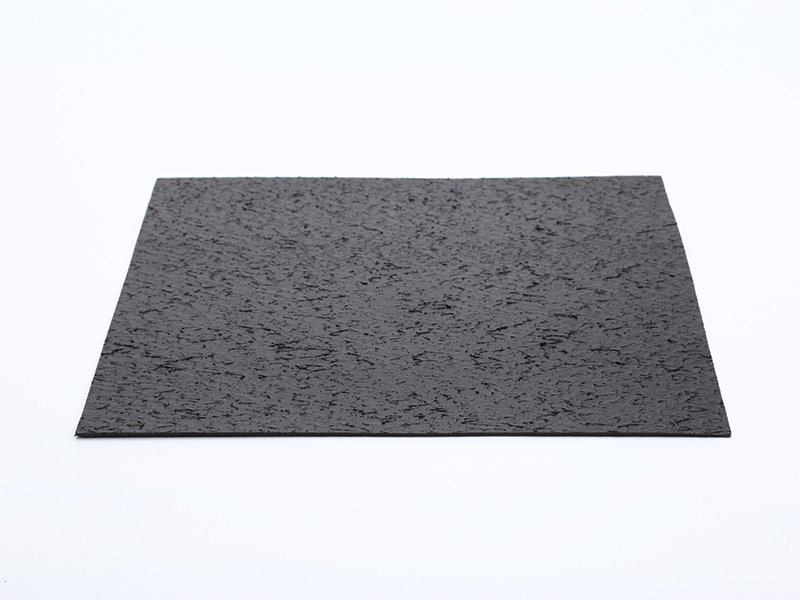
2. What Are The Advantages Of Textured Geomembrane?
- The friction coefficient of textured geomembraneis high – the small particles on the surface of high-strength, high elongation, and environmentally resistant textured geomembraneincrease the friction coefficient and stability of the slope, thereby maximizing the usable volume that smooth HDPE geomembrane can bear.
- The anti-seepage coefficient of textured geomembrane- High strength, high elongation, and environmental resistance. Textured geomembranehas a permeability coefficient K<1.010-13g/cm/cm2. s.pa, which cannot be compared with ordinary waterproof materials.
- Textured geomembraneChemical Stability – High strength, high elongation, and environmental resistance. Textured geomembranehas different chemical stability and is widely used in sewage treatment, chemical reaction tanks, landfill sites, high temperature resistance, asphalt, oil tar resistance, acid resistance, alkali resistance, salt resistance, and more than 80 strong acid and alkali chemical media corrosion.
- Aging resistance of textured geomembrane– high strength, high elongation and environmental resistance The textured geomembranehas good aging resistance, UV resistance, decomposition resistance, and can be used naked. The service life of the material can reach 50-70 years, providing good environmental impermeability.
- Textured geomembraneis resistant to plant roots – it has high strength, high elongation, and environmental resistance. Textured geomembrane has heterogeneous resistance to penetration and can resist most plant roots.
3. What Are Disadvantages Of textured geomembrane?
- Not resistant to high temperature: textured geomembranematerials contain certain plastic components, so when encountering high temperature environments, their hardness will change, leading to irreversible cracking.
- Easy to rupture: Although textured geomembranehave good corrosion resistance, they are easily punctured by sharp objects during construction, which can affect the anti-seepage effect of the project.
- Poor durability: Although textured geomembranecan resist acid alkali corrosion and oxide erosion, their degradation phenomenon still occurs after long-term use, and their original waterproof effect cannot be maintained for a long time.
- Price: The price of textured geomembranewith the same thickness is higher than that of smooth geomembrane.
4. Does Textured Geomembrane Really Work?
4.1 Application Area
- Hydraulic engineering: textured geomembraneis mainly used in hydraulic engineering for anti-seepage treatment of hydraulic structures such as embankments, reservoirs, and channels. Its excellent anti-seepage performance can effectively prevent problems such as leakage and piping in hydraulic structures, ensuring the safety and stability of the project.
- Environmental engineering: In environmental engineering, textured geomembrane are widely used for anti-seepage treatment in places such as landfills and sewage treatment plants. Its excellent impermeability and chemical corrosion resistance can effectively prevent pollutant leakage and protect environmental safety.
- Civil engineering: In civil engineering, textured geomembrane can be used for foundation treatment, slope protection, tunnel lining and other engineering projects. Its excellent tensile performance and adhesion to soil can effectively improve the stability and safety of engineering.
4.2 Construction methods
The construction of textured geomembrane mainly includes steps such as laying, welding, and anchoring.
Firstly, it is necessary to select suitable textured geomembrane materials according to the engineering requirements and lay them according to the design requirements. During the laying process, it is necessary to ensure the flatness and tightness of the membrane material to avoid problems such as wrinkles or hollowing.
Secondly, specialized welding equipment is used to weld the membrane material, ensuring that the welding quality meets the regulatory requirements. Finally, anchoring treatment should be carried out according to the engineering needs to ensure that the textured geomembrane is tightly bonded to the surrounding soil, preventing its sliding or movement.
5.Summary
Textured HDPE Geomembrane is the ideal geotechnical material as high friction lining materials of channels, dams and waste containment structures. BPM textured geomembranes are manufactured to the highest quality standards, ensuring exceptional durability. They are packaged in double woven geotextile and strength belts for added protection. With thickness options ranging from 1.0mm to 3.0mm, BPM textured HDPE geomembranes are suitable for projects requiring increased friction and steeper slopes, such as landfills, mining operations, retaining backfills, and waste containment. Our textured geomembranes have obtained certifications including ISO9001, ISO14001, TUV, Soncap, SASO, BV, and have passed rigorous testing by SGS and Intertek, among others.
